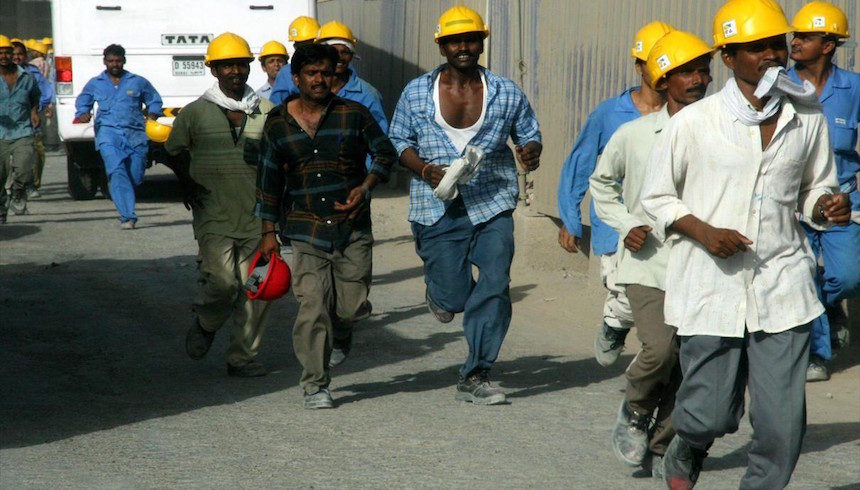What is Labour Migration?
This Article has been written by Nimisha Gupta, law student of University School of Law and Legal Studies, New Delhi
Labour migration is the movement of a labour force from one location to another. This can include different forms of migration like inter-continental, seasonal, short or long duration migrants etc.
Challenges faced in Labour Migration:
Regardless of the duration of their stay, labor migrants face myriad challenges at their destination. These challenges range from longer working hours, poor living and working conditions, social isolation, political exclusion to poor access to basic amenities like identity documentation, social entitlements, housing etc. At destination, migrant labour affects markets, lowering the cost of labour. Migration also affects the labour market at the place of origin. Migrant earnings affect income, expenditure patterns and investment and changes relations at household and community levels.
National Labour Migration:
Today, India is among the top 25 fastest-growing country worldwide. A pertinent reason for this growth is rural-to-urban migration, as most people do not find sufficient economic opportunities in rural areas and move to towns and cities instead. This large scale movement is also due to the inter-regional disparities, differences between socio-economic classes, intrusion of outsiders and skewed development policies.
Whatever may be the cause, there is no denying the fact that the economic growth in India today hinges on mobility of labour. In some parts of India, three out of four households include a migrant. Economic and social impacts on migrants and their families are variable. Even though there is some positive impact on incomes and investment, the major function of migration is to act as a ‘safety valve’ in poor areas.
Labour Laws in India:
The Ministry of Labour and the Departments of Labour, at state levels, are responsible for formulating and implementing measures to protect migrant workers. Certain existing labour laws aim to improve the conditions of migrant workers and prevent their exploitation. The important ones are: the Inter State Migrant Workmen (Regulation and Conditions of Service) Act, 1979; the Minimum Wages Act, 1948; the Contract Labour (Regulation and Abolition) Act, 1970; the Equal Remuneration Act, 1976; and the Building and Other Construction Workers (Regulation of Employment and Conditions of Service) Act, 1996. The enforcement of these laws is the responsibility of both the central and state governments.
International Labour Migration:
International migration, though involving a small proportion of the workforce in India, has important local impacts. Since independence, two distinct forms of migration have emerged in India: people with professional expertise or technical qualifications have migrated to industrialised countries, and semi-skilled and skilled workers have migrated to the Middle East.
Migration to industrialized countries grew steadily between 1950 and 2000 with the boom in IT sector. Nearly 1.25 million Indians had emigrated to the US, Canada, UK and Australia during this period. Today, some 3 million Indian migrants live in Gulf countries. Most of these migrants come from state like Kerala, Tamil Nadu, Andhra Pradesh and Punjab etc. The current number of Indian migrants overseas accounts for less than 1% of the total workforce in India, so has little direct impact on the national labour market.
However, the effects of migration are significant in major sending regions, which can be seen through the impacts on demographic structures, expenditure patterns, social structures and poverty levels. External migration flows are also regulated by the government. The main instrument of regulation is the Emigration Act 1983, which provides for the departure of Indian workers for overseas contractual employment and seeks to safeguard their interests. However efforts to direct manpower export have been minimal.
There are several policy issues. Some of the major issues in this context are:
- Pro-poor development especially in backward areas: The policies need to be accompanied by changes that improve the poor’s access to land, to common property resources, social and physical infrastructure, governance institutions etc.
- Food and Credit based interventions: Access to food can be improved through a more effective public distribution system, grain bank schemes etc.
- Ensuring basic entitlements in other schemes
- Improving the information base and bargaining strength of workers
- Panchayats should play an active role by maintaining a register of migrant workers and issuing identity cards and pass books to workers.
- Effective enforcement of labour laws: At the work place, stricter enforcement of labour laws is essential. It must be mandatory on employers to maintain the record of payments and advances in workers’ passbooks, and to provide them with the basic facilities laid down by law.
Conclusion:
There is a large gap between the legislation and enforcement, which has further deteriorated the situation. Poor migrants themselves being at a vulnerable position have little or no bargaining capacity. Rich class takes advantage of their situation and rampantly exploits them. The migrants are drowned in a vicious circle of poverty, poor working conditions and lack of basic amenities.
Most migrant laborers are also employed in the unorganised sector, where the lack of regulation compounds their vulnerability. They are largely ignored by government and NGO programmes. Legislations fail due to over-stretched regulatory authorities. The state sees migrants as a low priority and migrant workers are at a socially desolated state with little support from civil society.
There is no denying the fact that the economic growth in India today hinges on mobility of labour. Migrant workers contribute to national income enormously but there is little done in return for their security and well-being. There is an imminent need for solutions to transform migration into a more dignified and rewarding opportunity.
Picture Courtesy: Wikimedia







